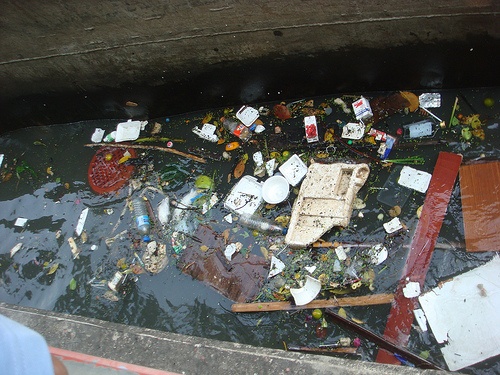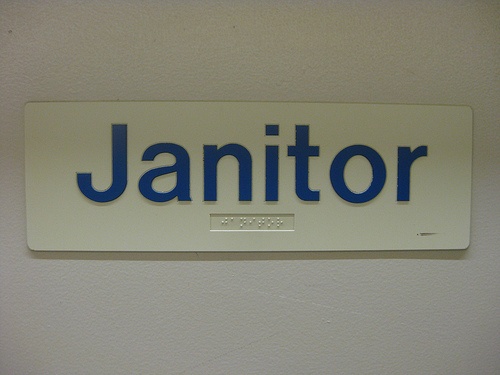If bloggers and other social media posters need a reminder that they can be held accountable for their online musings, a $600,000 jury verdict against an online poster in Georgia is such an example.
Read MoreAudit, Compliance and Risk Blog
Tags: Business & Legal, Internet, directors, directors & officers
US Department of Justice Reining in Supplemental Environmental Projects
Posted by Jon Elliott on Tue, Sep 05, 2017
For many years, federal and state environmental enforcement agencies have been willing to negotiate settlements in which defendants agree to conduct “supplemental environmental projects (SEPs)” as a way to reduce formal penalties for the noncompliance that led the agency investigation and enforcement. Proponents see SEPs as a way to promote environmental and health values by encouraging defendants to undertake projects that wouldn’t occur otherwise in order to reduce or eliminate civil and/or criminal liability. Opponents see them as rogue efforts in which prosecutors substitute their own judgment for the statutory and regulatory directives that are supposed to guide their actions.
Read MoreTags: Environmental risks, Environmental, EPA
What if I told you that safety wasn’t about you? That the ‘safety starts with you’ mantra no longer applies? What would you think? How would you act? Could this even be true?
Read MoreTags: Health & Safety, Training, Transportation
What’s In Your Janitor’s Closet? New York Seeks More Information
Posted by Jon Elliott on Tue, Aug 22, 2017
Even workplaces with very limited chemical use probably use cleaning supplies. If these supplies are bought in typical retail packaging intended for consumer use, the employer and employees may lack ready access to chemical content information beyond that on the labels. That’s because the Hazard Communication Standard (Hazcom) administered by the U.S. Occupational Safety and Health Administration (OSHA) exempts consumer products in their final form for consumer use, unless worker use is greater than that by typical consumers.
Read MoreTags: Health & Safety, OSHA, California Legislation, Environmental risks, Environmental, EHS, Hazcom
International Business Group Recommends Climate-Related Financial Disclosures
Posted by Jon Elliott on Tue, Aug 15, 2017
As governments worldwide consider expanding requirements to manage greenhouse gas (GHG) emissions and moderate climate change, private sector groups are mobilizing to craft voluntary reporting and management activities – which might shape or even avoid future governmental mandates. In May, the 32 international business leaders on the Financial Stability Board’s (FSB’s) Task Force on Climate-related Financial Disclosure issued recommendations for climate-related financial disclosures by public companies worldwide. The Task Force reported these recommendations to the Group of 20 (G-20) leaders at last month’s meeting in Hamburg – the G-20 finance ministers and central bankers had asked FSB in 2015 to commission the Task Force.
Read MoreTags: SEC, Greenhouse Gas, ghg, climate change
California Extends and Amends its Greenhouse Gas Cap-and-Trade Program
Posted by Jon Elliott on Tue, Aug 08, 2017
Since 2012, California has administered a “cap-and-trade” program, setting total greenhouse gas (GHG) emission limits from selected major emitting sectors and creating tradeable emission permits and offsets to provide flexibility and encourage innovation. The program was created under authority of the state’s 2006 “AB 32” legislation, which focuses on reducing statewide GHG emissions by 2020. This authority would have expired in 2020, but new legislation extends the program until 2030. In order to secure enough votes for the extension, legislative leaders and Governor Brown agreed to statutory changes in this program and related air quality programs.
Read MoreTags: California Legislation, Environmental risks, Environmental, Greenhouse Gas, ghg, cap-and-trade
CASL Private Right of Action Delayed: Enforcement by CRTC Continues
Posted by STP Editorial Team on Tue, Aug 01, 2017
Tags: Business & Legal, International, Internet, Canadian, casl
Major Changes to Ontario’s Employment and Labour Laws Pending
Posted by STP Editorial Team on Tue, Jul 25, 2017
On May 30, 2017, the Ontario government announced its intention to introduce The Fair Workplaces, Better Jobs Act, 2017. This legislation would include significant amendments to the Employment Standards Act, 2000 (ESA) and the Labour Relations Act, 1995 (LRA).
Read MoreOne of California’s many unique environmental, health and safety (EH&S) laws is its “Corporate Criminal Liability Act (CCLA).” CCLA provides greatly expanded potential personal criminal liabilities for violations by managers, so is often referred to as the “Be a Manager, Go to Jail” law. Enacted in 1990, CCLA draws both from occupational safety and product liability laws, to provide sweeping requirements for corporations and managers to abate or warn exposed individuals (including employees) about a broad variety of serious concealed dangers occurring in a broad variety of circumstances, including both workplaces and products. Although this law has been used by prosecutors and advocates to strike fear into the hearts of corporate managers, there have been few reported cases in its nearly three decades on the books.
Read MoreTags: Health & Safety, OSHA, California Legislation, Environmental risks, Environmental
EPA and the Corps of Engineers Propose to Turn Back the Clock on “Waters of the United States”
Posted by Jon Elliott on Tue, Jul 11, 2017
On June 27, 2017 the Environmental Protection Agency (EPA) and the U.S. Army Corps of Engineers (Corps) jointly proposed to revise their regulatory definitions of “waters of the United States”, applying authority under the Clean Water Act (CWA). Their proposals would rescind expansive versions adopted in June 2015, during the Obama Administration, and reinstate the text of the definitions in place until 2015. These actions represent the latest chapter in a saga dating back to United States Supreme Court decisions in 2001 and 2006 overturning decades-long understandings of which waters CWA empowers the agencies to regulate. (I wrote about this history in a blog about the 2015 rules here).
Read MoreTags: Environmental risks, Environmental, EPA, Stormwater, clean water










